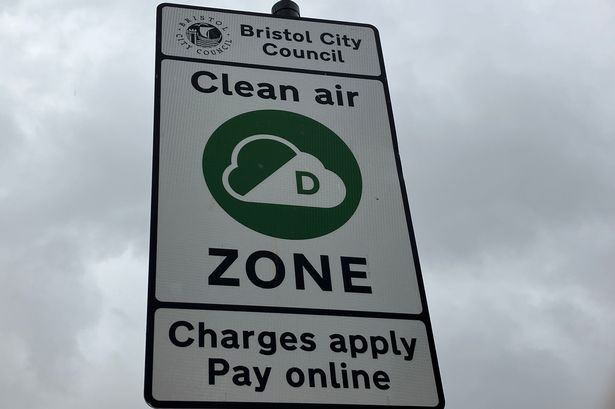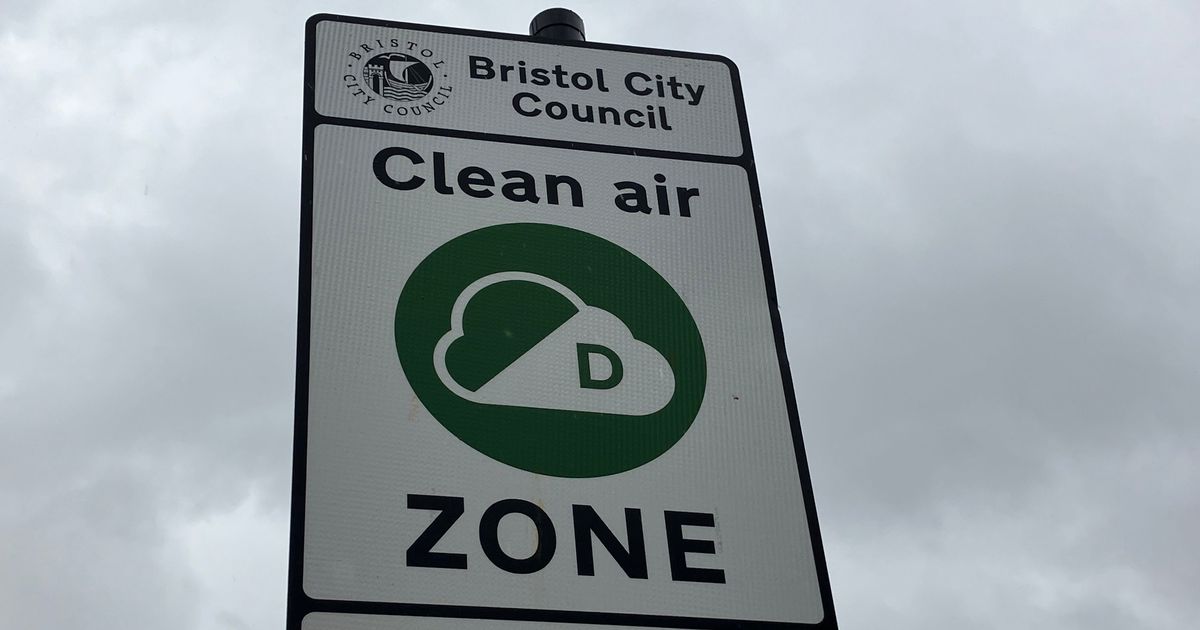There were plans to increase the daily charge from £9 to £10, £12 or £14 The Clean Air Zone was rolled out three years ago(Image: Bristol Live)
The Clean Air Zone was rolled out three years ago(Image: Bristol Live)
Hiking the fees for some drivers to enter the Clean Air Zone in Bristol has been ruled out, for now. Anti-pollution campaigners criticised a plan to increase the daily fee from £9 as progress on reducing pollution in the city centre slowed down last year.
Since the Clean Air Zone was introduced three years ago, levels of nitrogen dioxide have fallen across Bristol and within the zone that covers a large part of the city centre. But last year, that reduction was less than in 2023, and nitrogen dioxide levels actually increased in two spots.
Initial modelling done by Bristol City Council staff showed that increasing the fee — potentially to £10, £12 or £14 a day — would deter drivers of non-compliant vehicles from entering the zone and speed up progress towards getting pollution within legal limits. However, the latest data from last December shows only four per cent of trips within the zone are non-compliant vehicles.
This means that fewer than one in 20 trips are from drivers on non-compliant vehicles, raising questions about how much of an impact a higher fee would have. Drivers of many compliant and exempt vehicles still emit nitrogen dioxide and pollute the air, and traffic levels in the city centre actually increased last year compared to 2023.
Councillors on the environment policy committee voted against consulting the public on increasing the fees on Thursday, November 6. While the four Greens on the committee supported the consultation, they were outvoted by three Labour councillors, one Liberal Democrat and one Conservative councillor. Labour claimed the hike looked like a “cash grab”.
Millions of pounds raised from the Clean Air Zone fees have been used to improve alternative forms of transport, such as introducing new bus services. But one recent decision, to spend £5 million of CAZ income on new resident parking zones, came under fire from Labour who questioned whether this money could be better spent on reducing pollution with better buses.
Labour Cllr Kirsty Tait added: “There are people who want to use public transport in wards like mine [Hartcliffe and Withywood] but the transport options aren’t adequate enough. The charges are just pushing people further into poverty. People might be forced to give up work when opportunities are quite rare in areas like that, because of the cost of coming across the city.”
Another problem was the lack of modelling to back up the increase. While some initial modelling has taken place, council staff were due to carry out more detailed modelling of the effects of a higher fee before consulting the public. And the financial support for people to upgrade to less polluting vehicles also came under criticism, although this will be extended to help more switch.
Christina Biggs, from the Bristol Clean Air Alliance, said: “There’s now 94 per cent of vehicles that are ‘clean’. But they’re not clean, they’re compliant. There’s two per cent that are exempt, and these exempt vehicles could be polluting as well. My suggestion is that we go for the 94 per cent of legally compliant vehicles who are nevertheless polluting our city.
“The step to take now is to get tougher and to actually start to think about the whole fleet, not just the four per cent. So rather than putting the charges up, which is punishing the four per cent, to maybe reduce slightly less, but actually with the 94 per cent, we can do this with road space removal.
“We’re very pleased about Park Street. The Bristol Bridge bus gate has been brilliant. Let’s carry on doing that. I know it’s not popular but how else are we going to solve this pollution problem in the centre of Bristol? We’ve got schools there. It’s a crisis. Don’t put the charges up, you’re just punishing a small percentage and it probably won’t do anything.”
As well as removing space on the roads for private cars, she suggested rolling out more electric buses and reclassifying the M32 motorway into an A road. Long-stalled plans for a park and ride at the top of the M32 should be revived, she added, which would stop the motorway “injecting pollution into the heart of Bristol”, and even trams along the whole of the route would help too.
Between November 2022 and December 2023, nitrogen dioxide levels dropped by 12.6 per cent inside the zone and 7.8 per cent across the wider city. Last year, levels dropped by 5.1 per cent inside the zone and 4.4 per cent outside the zone, a much smaller reduction. Breathing in this pollutant has been linked to cardiovascular disease, respiratory illness and early death.
Which vehicles comply, which have to pay and which are exempt is a decision taken by the government’s Joint Air Quality Unit, rather than the council. And its choices can be confusing.
Green Councillor James Crawford said: “I drive what I would call a bit of a banger. It leaks, it’s not very efficient, and it’s not very good. When I tell people that my car is exempt from the CAZ, people are genuinely very surprised. It’s old enough to drink.”
Also set by the government is the target of 40 micrograms of nitrogen dioxide per cubic metre of air. Below this level, pollution still harms people’s health and the World Health Organisation recommends 10 micrograms. But the council is still aiming to reduce levels to 40 micrograms.
It’s unclear if the government will lower the target from 40, which would affect Bristol’s CAZ. Next year the council will draw up a broader strategy on improving air quality, looking at reducing levels of other pollutants like particulate matter, and not just focusing on transport. Another focus will be on upgrading the council’s own fleet of vehicles to be less polluting.
A common complaint from drivers of non-compliant vehicles is that you can’t check whether you’ve driven into the zone or not. This leaves many people hit with a surprise fine for failing to pay the fee. However, changing this could be “quite difficult”.
Green Cllr Martin Fodor, chair of the environment committee, said: “I’m disappointed by the scheme that was put in place by the previous [Labour] administration where you can’t have an account with your registration number. You have to know you’ve gone in and be aware of that. But negotiating a different scheme with the government would probably be quite difficult now.”
Council rules means that the committee can’t consider a similar paper for another six months. So next spring there is a possibility that plans to hike the fees could resurface. After the meeting, Labour Cllr Tait said more evidence was needed to justify the increase in fees.
She said: “Hiking the charges — potentially up to £14 — would hurt working class communities like mine, who are already struggling with the cost of living crisis. I cannot justify this, especially as the Green Party did not provide any evidence about how higher fines would improve air quality.
“All proceeds from the Clean Air Zone should go towards improving transport for the whole city, but the Greens are spending it on new resident parking zones. Working class people, who can’t afford to upgrade their vehicles, from areas with poor public transport options pay these charges — our hard-earned cash should not go towards Green Party pet projects in central Bristol.
“The council has signed up to the Just Transition Declaration — 10 principles that ensure the worst-off do not bear the brunt of the cost of decarbonisation. The Green-led council cannot just be allowed to ignore this policy when it doesn’t suit their annual budget.”
